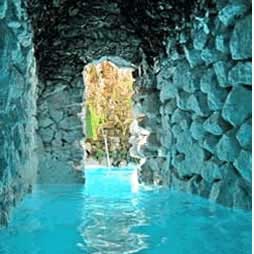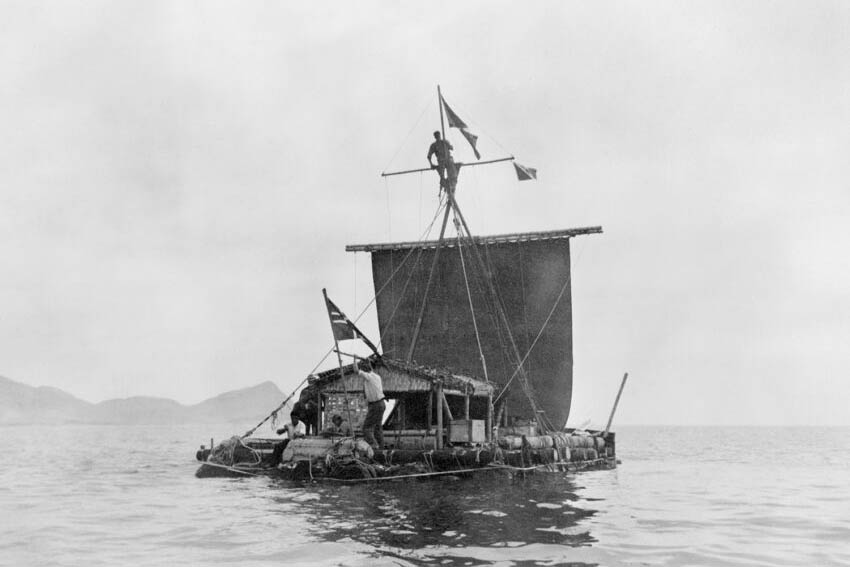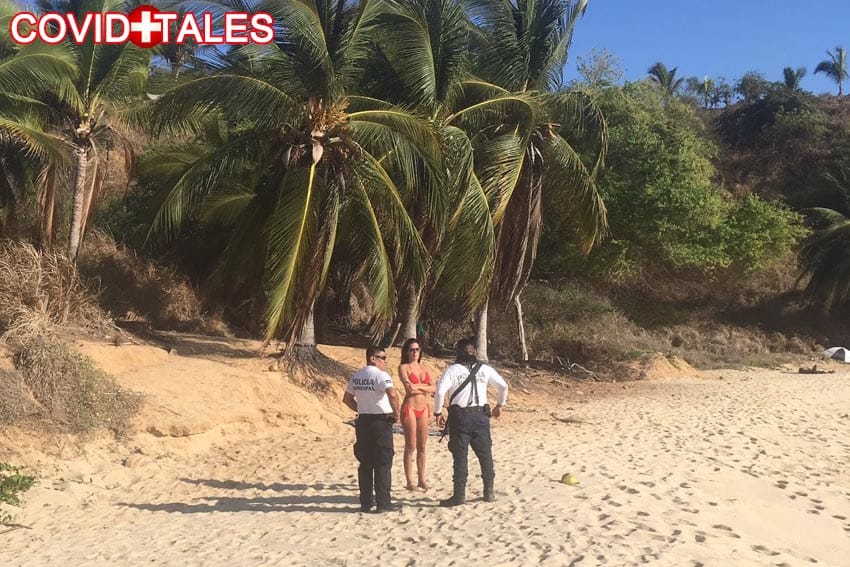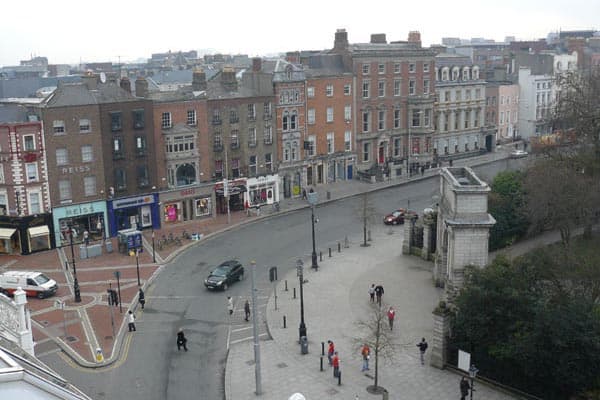
Traveling throughout Mexico can be equally rewarding and dangerous. Rewarding if you experience authentic Mexican food, culture, beautiful scenery, and people; and dangerous if you get lost and end up in an unsafe section, unsure of what to do or how to go about getting help. Tony Cohan explores the remarkable country of Mexico in 18 chapters of his travel narrative, Mexican Days.
Chapter 1: Once Upon a Time in Mexico
 “So what do you make of this?” said Xavier. I watched, from behind a cordon of yellow police tape, Antonio Banderas in a mariachi outfit, and Salma Hayek in far less, dangling from cables affixed to the rooftop of the Hotel San Francisco in San Miguel de Allende’s central plaza, El Jardin.
“So what do you make of this?” said Xavier. I watched, from behind a cordon of yellow police tape, Antonio Banderas in a mariachi outfit, and Salma Hayek in far less, dangling from cables affixed to the rooftop of the Hotel San Francisco in San Miguel de Allende’s central plaza, El Jardin.
Walkie-talkies crackled in Spanish and English. A utility van edged slowly past with a card taped to its windshield reading “ONCE UPON A TIME IN MEXICO.”
Chapter 2: Invitation to the Voyage
“The next morning I awoke to blessed silence. Dreams of lost luggage, a stolen passport, and an incomplete list diffused into the high-beamed recesses of the ceiling. I gazed blearily at my still-packed suitcases on the bedroom floor.
Out the tall window, first sunlight tipped the pergola of the casita. An iridescent hummingbird sipped from a fat orange blossom of the trumpet vine trailing down the patio adobe wall. The deep bell known as La Luz tolled its muffled call to vespers at La Parroquia. I was back.
A volley of small explosions erupted: firecrackers announcing a neighborhood fiesta, that rowdy dawn custom so familiar to San Miguel residents and irritating to visitors. The loud cracks stopped, then began again, in patterned salvos. No, it wasn’t firecrackers but gunshots.
Filming was starting early at the Hotel San Francisco. Struggling up, I went to the kitchen. There was just enough Chiapas coffee left to make a strong cup. Another fusillade of bullets burst forth form the jardin.
I washed, slipped into some clothes, and headed out, thinking I’d mull over the writing proposal over breakfast somewhere in the Centro. Stepping out onto Calle Flor, I saw a crowd of extras, dressed as tattered Mexican peasants, surging toward me, urged on by bullhorns, trailed by cameras on dollies. Cornered like a borracho at San Miguel’s yearly September Pamplona, the bull run, I ducked back inside just ahead of their charge and slammed the door. I went to the phone and called the editor back.

Later that morning when the film crew had moved on to their next setup, I left the house. Avoiding the Jardin, which still resonated with gunshots, I walked down Pila Seca and flagged a taxi.
“La Gruta,” I said to the driver, climbing in beside him. We bumped own Calle Canal, a street encoded with ghost recollections of fiestas and parades, moles and mariscos, walks taken alone or with friends-textures laid into memory like the coats of limewash on these old colored walls.
The medieval enclosure of the colonial center widened to reveal a glistening strip of lake at the foot of the town, la Presa, swollen with water from months of summer rains.
The taxista turned north at the two-lane road toward the town of Dolores Hidalgo. Quickly we left behind old San Miguel on its hill, racing past sections of “new” town that grew ceaselessly outward these days in rings – new colonias, little unsurfaced brick neighborhoods with their own names. Soon we hit open campo, windows down, fresh morning air buffeting the cab.
I’d never had a car in Mexico. Once I tried to figure the costs of owning one compared to hopping taxis and buses, or renting an occasional car, and decided I’d come out ahead. But the calculation had less to do with economics than with what being here meant: a respite from California driving for life on foot, open to encounters, pauses, the mysteries hidden in slowness. In Mexico I took the stance of a pilgrim, inviting correctives to the limitations of the culture I came from, revelations offered me here as boons.
Twenty minutes outside San Miguel the taxi let me off at small crossroads beside a low running wall with the hand-painted words LA GRUTA. Across from it, a whitewashed sign with an arrow said ATOTONILCO. The taxi sped off, leaving me alone in the empty morning. Tiny insects buzzed about my head. A black crow cawed from the twisted limb of a pirule tree.
The groundwater around the nearby village and penitent shrine of Atotonilco is uniformly hot (in fact the word atotonilco in Nahuatl means “place of hot waters”) and feeds the baths of La Gruta, “The Grotto.” On full moon nights La Gruta hosted hedonistic gatherings of San Miguel New Agers, and on weekends tourists took over, but I hoped that on this quiet morning it would be mine alone.

I slipped through the gate onto the untended property. Passing a large swimming pool drained of water, I came to a fence bordering a stream where Chichimecan women scrubbed clothes on rocks. I parted a cluster of tall cane in the middle of the field and stood before a small blue oval pool filled with clear water.
Hidden from the gaze of giggling washerwomen, I slipped out of my clothes, lowered myself over the edge, panting, my chin on my arms, listening to a church bell, a tawdry cock’s crow, a car accelerating on the highway beyond, my mind filling, then emptying, with all it had taken to get here.
“A big spring issue, focusing on Mexico,” the editor had said. What’s interesting these days? Take some trips. Look around the country. Not the usual treatment….
The prospect excited me, of course. I found Mexico endlessly alluring. It had been a long while since I’d traveled around; with the years, as I’d settled into San Miguel, inevitably I’d journeyed less to other regions. An article could help finance a trip to South America I’d had in mind. But I’d just set my bags down in San Miguel after a round of travels, barely tasted arrival. And it was hard to think straight with Robert Rodriguez and crew shooting up the town.
I clambered out of the pool, wrapped a towel around me, and walked through an opening in a stone wall to a paved area with old rusty lockers. Leaving my clothes in one, I lowered myself into an open rectangular pool surrounded by banks of palms, cacti, and flowers.
I swam to the far end, where steaming groundwater coursed from a narrow arched tunnel and waded into the chest-high current. Sliding onto my stomach, I paddled up ascending locks in the darkness toward distant dancing beams of light. Rough stone walls brushed my skin; the rising roar of water filled my ears.
I came to a domed brick chamber; the grotto. Shafts of light from pinholes in the roof made little rainbows in the steam. A waterfall surged from an opening high in the dome. Slithering over the rim into the circular pool, I stroked toward the hot, deafening cascade and stood beneath it, eyes closed, shoulders drooped, letting the torrent blast my thoughts into smithereens.
Chapter 8: Dinner With Lauren
Early that November, after my weeks in Oaxaca and Chiapas, I made a series of short trips in and around Mexico City. It was hard to discern, in bustling, smoggy Cuernavaca, an hour distant from the capital, the quiet town under the volcano that had drawn writers, artists, and eccentrics of an earlier era.
In nearby Tepotzlan, the birthplace of the Aztec serpent-god Quetzalcoatl, proto-hippies selling crystals and tie-dyed T-shirts in the plaza seemed to have commandeered the erstwhile midcentury artists’ bohemia.
In Valle de Bravo, a popular pine-forested retreat to the north, noise from the boats on the artificial lake, cheesy tourist kiosks along the old cobbled streets, and traffic jams on the road out infected the beauty of the setting. The pressures of the swelling capital had tainted its old getaways, it seemed; after resonant Oaxaca, they felt tinny.
From the window of a Flecha Amarilla bus running north to San Miguel, I gazed out at burning husks of maize, black crows wheeling over fields. Verdant when I traveled this road a month earlier, the earth was brown now, the air dry.

November is a time of special feeling in Mexico, the country’s rich relationship to the subject of mortality coming to the force. All over Mexico, a curiously festive dance of death takes place. On the second day of the month, cemeteries throughout the country fill with visitors for Day of the Dead.
In the city of Guanajuato, the plazas brim with puestos, stalls, sporting thousands of the most astounding handmade alfeniques, little sugar or chocolate objects, often in the form of skulls, some with personalized names – also animals, cars, houses, practically anything one could imagine.
In homes and public buildings, altars are erected: tall tables with four wands on each corner, candles, incense, photographs of the deceased-and a profusion of rich gold cempasuchi, the “flower of four hundred petals” that we call marigold.
In that November of 2001, surely a year of death, I’d seen such an altar erected in Mexico City’s Tepito Market in memory of a young man immolated in the World Trade Center attacks, his earnest young eyes gazing out from what looked to be a graduation snapshot.
The landscape outside the bus window mutated from city to suburb to fields of corn, burros, shepherds, and hooded women in rebozos: traveling back in time. I’d chosen a second-class bus over the big, new direct primera classes with their booming television monitors, hoping to allow a dream corridor of transition to unfold at the window – as it had on that first Mexican bus ride to San Miguel sixteen years earlier, altering my course forever.
Tony Cohan is the award-winning author of On Mexican Time, the memoir Native State, and the novels Opium and Canary. His articles, essays, and reviews have appeared in the New York Times, the Washington Post, the Los Angeles Times, and Condé Nast Traveler. He divides his time between Mexico and California.
Buy This Book From Amazon Mexican Days: Journeys into the Heart of Mexico
- These 9 U.S. National Parks Require Reservations in 2024 - April 17, 2024
- Take a Hike in Olympic National Park - April 17, 2024
- The Wild Mississippi: 2340 Miles Across Ten States - April 8, 2024




